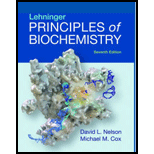
(a)
To determine: The reason that fermentation cease when the supply of phosphate was exhausted.
Introduction:
In 1906, Young and Harden studied the fermentation of glucose to carbon dioxide and ethanol by extracts of brewer’s yeast. They made the following observations: (1) Inorganic phosphate was necessary for fermentation, when the phosphate supply was exhausted, fermentation ceased before all glucose was used. (2) During fermentation ethanol, a hexose bisphosphate and carbon dioxide accumulated. (3) When arsenate was substituted for phosphate, there was no accumulation of hexose bisphosphate, but the fermentation proceeds until the conversion of whole glucose into carbon dioxide and ethanol.
(b1)
To determine: The reason for accumulation of ethanol and CO2.
Introduction:
Fermentation is a chemical process in which glucose is broken down into ethanol or lactic acid. This process occurs anaerobically. It is carried out by yeast or other microorganism.
(b2)
To determine: Whether the conversion of pyruvate to ethanol and CO2 essential.
Introduction:
Fermentation is a chemical process in which glucose is broken down into ethanol or lactic acid. This process occurs anaerobically. It is carried out by yeast or other microorganism.
(b3)
To determine: The hexose bisphosphate that get accumulated.
Introduction:
In 1906, Young and Harden studied the fermentation of glucose to carbon dioxide and ethanol by extracts of brewer’s yeast. They made certain observations.
(b4)
To determine: The reason for accumulation of hexose bisphosphate.
Introduction:
In 1906, Young and Harden studied the fermentation of glucose to carbon dioxide and ethanol by extracts of brewer’s yeast. They made certain observations.
(c)
To determine: The reason for the substitution of arsenate for phosphate that prevents the accumulation of the hexose bisphosphate yet allows fermentation to ethanol and carbon dioxide to go to completion.
Introduction:
Fermentation is a chemical process in which glucose is broken down into ethanol or lactic acid. This process occurs anaerobically. It is carried out by yeast or other microorganism.
Want to see the full answer?
Check out a sample textbook solution
Chapter 14 Solutions
Lehninger Principles of Biochemistry
 BiochemistryBiochemistryISBN:9781319114671Author:Lubert Stryer, Jeremy M. Berg, John L. Tymoczko, Gregory J. Gatto Jr.Publisher:W. H. Freeman
BiochemistryBiochemistryISBN:9781319114671Author:Lubert Stryer, Jeremy M. Berg, John L. Tymoczko, Gregory J. Gatto Jr.Publisher:W. H. Freeman Lehninger Principles of BiochemistryBiochemistryISBN:9781464126116Author:David L. Nelson, Michael M. CoxPublisher:W. H. Freeman
Lehninger Principles of BiochemistryBiochemistryISBN:9781464126116Author:David L. Nelson, Michael M. CoxPublisher:W. H. Freeman Fundamentals of Biochemistry: Life at the Molecul...BiochemistryISBN:9781118918401Author:Donald Voet, Judith G. Voet, Charlotte W. PrattPublisher:WILEY
Fundamentals of Biochemistry: Life at the Molecul...BiochemistryISBN:9781118918401Author:Donald Voet, Judith G. Voet, Charlotte W. PrattPublisher:WILEY BiochemistryBiochemistryISBN:9781305961135Author:Mary K. Campbell, Shawn O. Farrell, Owen M. McDougalPublisher:Cengage Learning
BiochemistryBiochemistryISBN:9781305961135Author:Mary K. Campbell, Shawn O. Farrell, Owen M. McDougalPublisher:Cengage Learning BiochemistryBiochemistryISBN:9781305577206Author:Reginald H. Garrett, Charles M. GrishamPublisher:Cengage Learning
BiochemistryBiochemistryISBN:9781305577206Author:Reginald H. Garrett, Charles M. GrishamPublisher:Cengage Learning Fundamentals of General, Organic, and Biological ...BiochemistryISBN:9780134015187Author:John E. McMurry, David S. Ballantine, Carl A. Hoeger, Virginia E. PetersonPublisher:PEARSON
Fundamentals of General, Organic, and Biological ...BiochemistryISBN:9780134015187Author:John E. McMurry, David S. Ballantine, Carl A. Hoeger, Virginia E. PetersonPublisher:PEARSON





